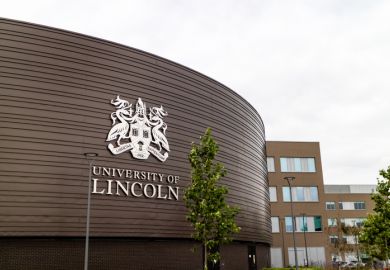This week’s announcement that scientists who publish in the Nature journals will be able to make their papers freely available online marks another significant step on the journey towards what we hope will be full open access.
However, the move also underlines that the bulk of open access (OA) budgets continue to be spent on supporting open access publishing in subscription journals, on payment of article-processing charges (APCs).
In the case of the 34 Nature-branded journals, the first step is a “read and publish” deal with Germany’s Max Planck institutes, allowing affiliated researchers to both access the journals and to publish in them open access. The OA fee that Max Planck will pay is based on a cost of €9,500 (£8,600) per article. The publisher, Springer Nature, says that it is in discussions to allow authors worldwide to publish open access in Nature journals from next year.
The UK alone spends more than £25 million on OA journal publishing annually, but the proportion that goes to large commercial publishers for OA in hybrid journals has increased year-on-year. The average cost for publishing in hybrid journals also continues to increase steadily.
This trend has been evident since Springer Nature launched its leading OA journals, Nature Communications and Scientific Reports. In 2018 alone, these journals received more than £1.6 million from 30 UK research-intensive institutions. In 2019, Elsevier launched 100 new OA journals and the humanities publisher IEEE launched 13.
Proponents of a less homogenous publishing marketplace will hope that the lure of prestige brands lessens as increasing numbers of institutions commit to the Declaration on Research Assessment (Dora) code of conduct and the Leiden Manifesto principles, which state that research should be assessed on its own merits rather than according to the journal in which it is published. However, an increased focus on pure publish agreements with native OA publishers can ensure a greater choice of publishing outlets and better value for money for institutions and funders.
The average APCs of native OA publishers are lower than those for hybrid journals, and pure publish agreements aim to further reduce costs by providing lower fees per article and simplifying administrative processes for authors and support staff. Jisc has been working with a range of publishers on a variety of OA models to stimulate a more diverse and effective sector and we have recently arranged two agreements with the Public Library of Science (Plos). The agreements, to which UK universities can now sign up, also include a range of benefits that aren’t currently available from other OA publishers.
The pricing is based on direct and indirect publishing costs, plus a small surplus for re-investment so the publisher can offer institutions a flat fee to participate without the risk of increasing fees to boost revenue and satisfy shareholders. Through these agreements, Plos seeks to forge a new kind of relationship with libraries, far beyond the typical transactional relationships of OA publishers. Institutions that sign up are recognised as supporters and have an opportunity to input into future developments, such as providing feedback on the development of new Plos services to further Open Science. They’ll receive publication reports and data-sharing reports that will ease administrative burdens. Institutions no longer have to spend so much time tracking papers and collecting data to comply with funder mandates. Plos is also exploring usage data reporting for institutions, the first native OA publisher to do so.
Plos’ commitment to transparency and equitable publishing aligns with the social responsibility goals of UK institutions. But the most attractive element of the agreement is likely to be the uncapped publishing rights for accepted authors. As with the “subscribe to open” model, institutions are invited to commit to sustaining the publisher for a fixed period in return for these benefits.
As well as being good for OA, the Plos agreements can act as a catalyst for conversations about OA funding sources. Institutions typically base decisions about joining agreements with publishers on their past publishing activity – which may not always have been high. But the transition to OA requires the sector to look forward and plan beyond previous activity.
Which publishers does the sector want to support and what level of financial support is affordable and sustainable? These are not questions that library leaders alone will be able to answer. Institutional committees concerned with OA must drive a vision for the institution, making sure to include faculty and professional services representatives in their discussions. Only then will the transformation of scholarly communication into full open access be fully realised.
Helen Dobson is licensing and engagement manager at Jisc.
Register to continue
Why register?
- Registration is free and only takes a moment
- Once registered, you can read 3 articles a month
- Sign up for our newsletter
Subscribe
Or subscribe for unlimited access to:
- Unlimited access to news, views, insights & reviews
- Digital editions
- Digital access to THE’s university and college rankings analysis
Already registered or a current subscriber? Login








